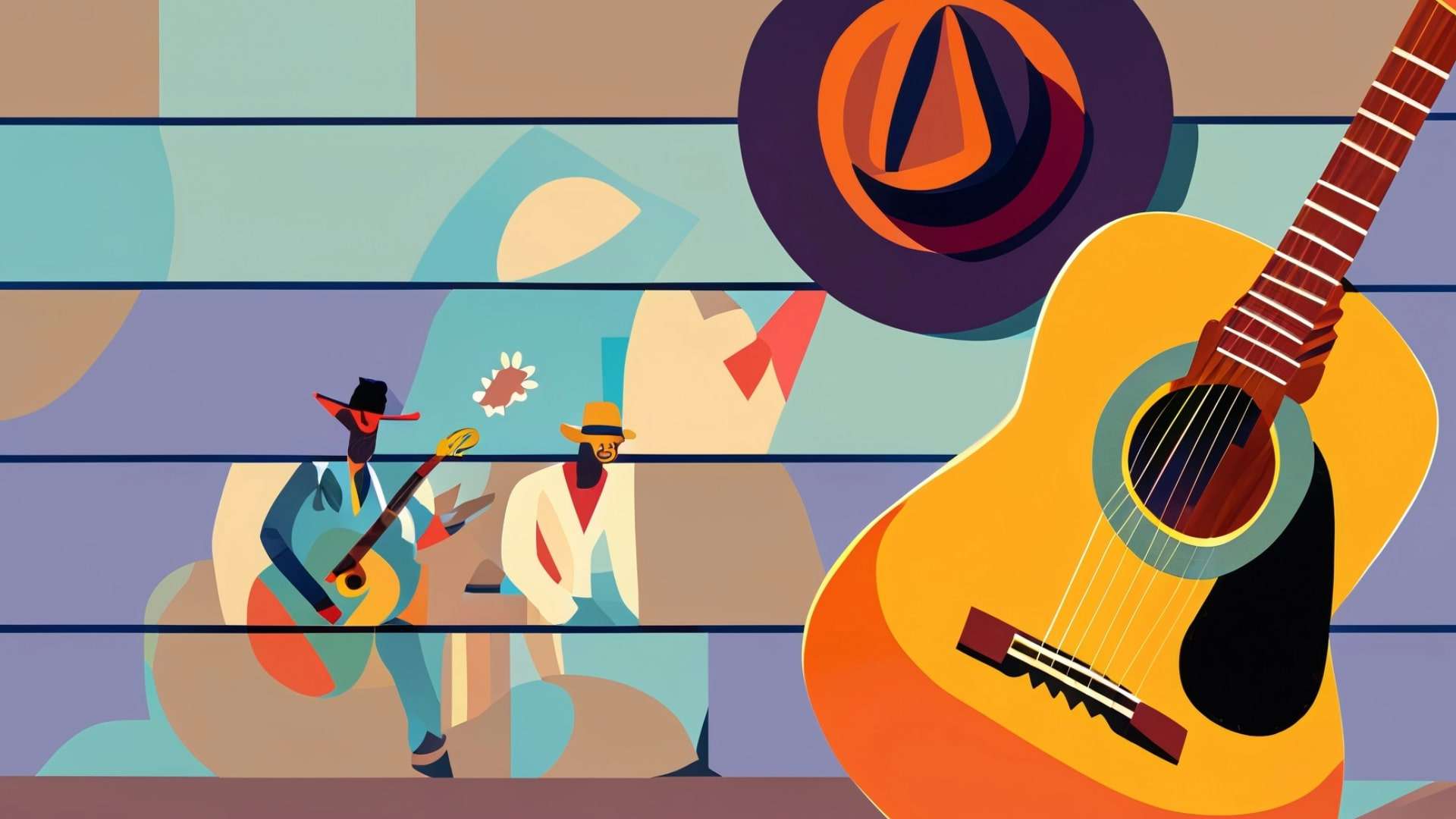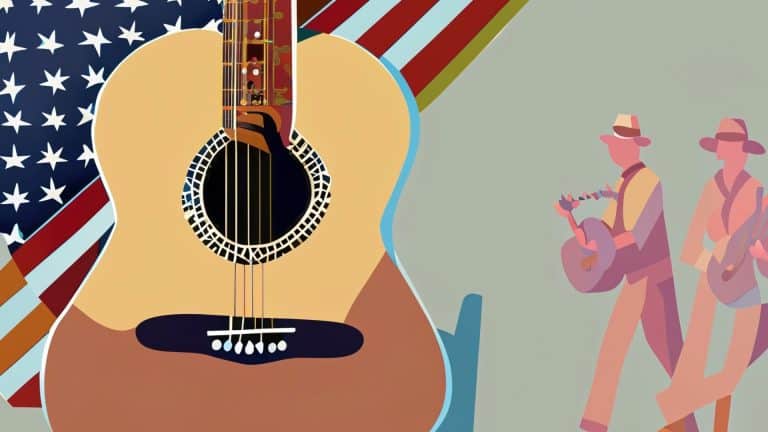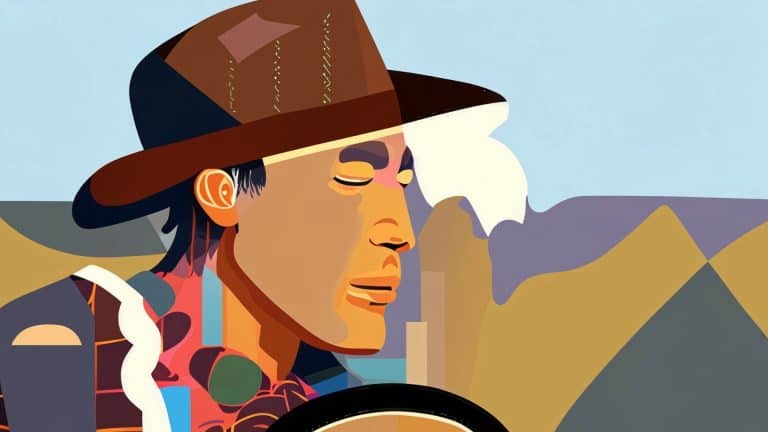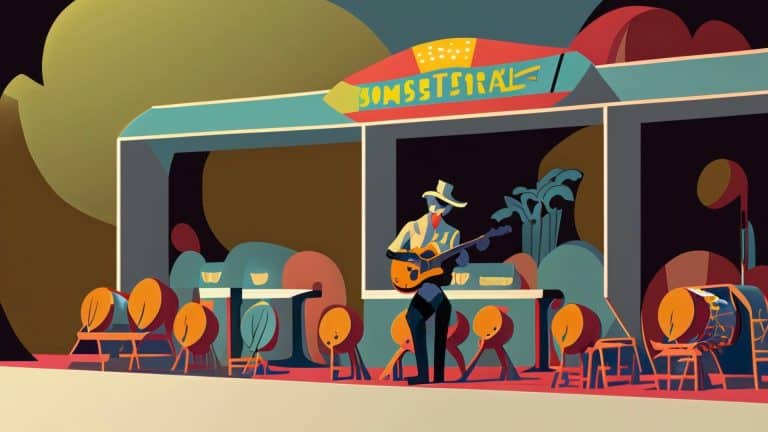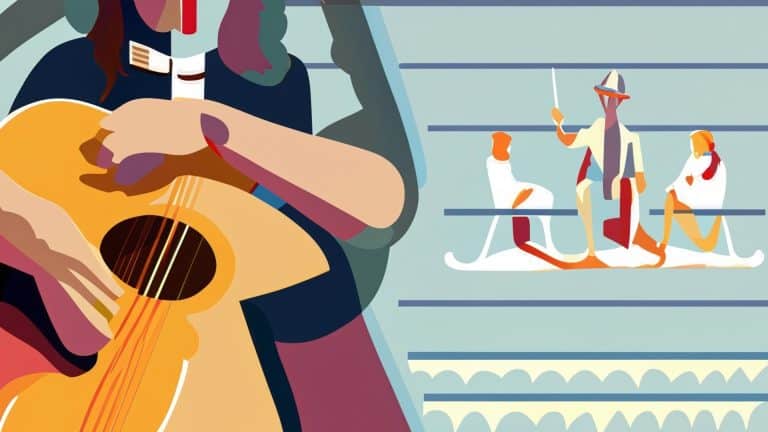Exploring Bluegrass Roots: From Bill Monroe to Beyond
Howdy partners! Welcome to Digital Rodeo, your go-to source for all things country music. Today we’re gonna mosey on down to the heart of bluegrass music. From its hillbilly origins to modern innovations, we’ll cover everything you need to know about this foot-stompin’ genre.
So settle in, tune your banjo, and get ready to pick along as we trace the history of bluegrass from start to finish!
The Birth of Bluegrass
Before we had bands like The Avett Brothers and Punch Brothers, bluegrass music first took root in the early 1940s. This distinct sound emerged from the Appalachian region’s country and folk music traditions.
Bill Monroe, the Father of Bluegrass himself, grew up in rural Kentucky during the 1920s and 1930s. He and his brothers absorbed the various musical styles around them – gospel songs in church, ballads from traveling performers, blues riffs from nearby cities. They combined these influences with old-time fiddling and fast rhythmic banjo pickin’ to create something fresh and energetic. This new blend reflected the lives of rural farmers and coal miners in the mountains.
In 1945, Bill Monroe and His Blue Grass Boys debuted their lively instrumental tunes on the Grand Ole Opry stage. Monroe’s high lonesome tenor vocals, driving mandolin chops, and breakneck tempos electrified listeners. Music history was made, and soon Monroe’s “bluegrass” sound spread like wildfire.
Below is a timeline of key events in the birth of bluegrass:
| Year | Key Event |
|---|---|
| 1920s-1930s | Bill Monroe grows up absorbing Appalachian musical styles |
| 1938 | Monroe forms his first band, The Blue Grass Boys |
| 1945 | The Blue Grass Boys debut on the Grand Ole Opry |
| 1946 | Earl Scruggs joins the band, pioneering the rapid three-finger banjo style |
| 1947 | Lester Flatt joins as guitarist and lead vocalist |
During these early days, Monroe and his band established the core instruments and sound of bluegrass. The lineup typically featured mandolin, banjo, guitar, bass, and fiddle. The songs often contained breakneck solos, vocal harmonies, and bluesy melodies. This electrifying new style left audiences hollerin’ for more wherever Monroe and his band played.
Bill Monroe: The Father of Bluegrass
Now let’s talk about the man who started it all – Bill Monroe. This Kentucky native is rightly called the Father of Bluegrass. His long career and innovation shaped the genre from start to finish.
Born in 1911, Monroe spent his youth immersed in music. He and his brothers, Birch and Charlie, performed at local barn dances and radio stations. In 1938, Monroe formed the first version of the Blue Grass Boys. The band got their name from Monroe’s home state of Kentucky, nicknamed the “Bluegrass State.”
Monroe’s timing was perfect. The 1930s and 40s saw huge migration from rural areas into cities. People longed for the familiar sounds of old-time Appalachia. Monroe’s music delivered exactly that with his nostalgic tenor vocals and lightning-fast instrumental solos. Fans went wild for the Blue Grass Boys at live shows and on early country radio programs.
Things really took off when Monroe joined the Grand Ole Opry in 1939. Every Saturday night, his frenetic performances reached huge audiences on the Opry’s 50,000-watt station. Music legends like Hank Williams, Patsy Cline, and Johnny Cash shared the stage with Monroe. Country music stars rapidly incorporated elements of Monroe’s style into their own work.
Over the next six decades, Monroe recorded over 150 albums featuring bluegrass standards. He mentored generations of musicians who spread bluegrass nationwide. Monroe toured almost nonstop until his death in 1996 at age 84. Even in old age, Monroe continued evolving his sound. He remains the measuring stick by which all other bluegrass performers are judged.
Here are some of Monroe’s major contributions as the Father of Bluegrass:
- Created the classic bluegrass lineup of mandolin, guitar, banjo, bass, and fiddle
- Developed the hard-driving rhythmic bluegrass sound
- Pioneered syncopated “Monroe-style” mandolin chops
- Established the breakneck tempos and virtuosic solos of bluegrass
- Defined the high lonesome tenor vocal style
- Mentored scores of famous bluegrass musicians
- Remained dedicated to touring and recording bluegrass for over 60 years
Without Bill Monroe, we simply wouldn’t have bluegrass music as we know it today. The man made a timeless and truly American artform.
Influential Bluegrass Artists
Bill Monroe blazed the trail, but many other pickers helped shape bluegrass over the years. Let’s look at a few key musicians who left their mark.
Earl Scruggs
If Monroe pioneered bluegrass mandolin, then Earl Scruggs did the same for banjo. He joined the Blue Grass Boys in 1945 and pioneered the rapid three-finger picking style that defines bluegrass banjo. Scruggs played driving eighth-note rhythms and lighting-fast solos. His technical brilliance raised the banjo from a comedic prop to a leading melodic voice. Songs like “Foggy Mountain Breakdown” and “The Ballad of Jed Clampett” introduced Scruggs’ picking nationwide. Every banjo player since stands in Earl’s shadow.
Lester Flatt
Smooth-voiced guitarist Lester Flatt teamed with Scruggs as a Blue Grass Boy in the late 1940s. Flatt’s crooning vocals balanced Monroe’s high tenor on classics like “Roll In My Sweet Baby’s Arms.” When Monroe dismissed Flatt & Scruggs in 1948, they stuck together to form one of the genre’s most popular bands. The Foggy Mountain Boys set the template for vocal harmonies in bluegrass. Flatt & Scruggs brought folk roots and romantic ballads to broad audiences on country radio and TV.
Ralph Stanley
Ralph Stanley helped expand Monroe’s raw sound into a more bluesy direction. Teaming with his brother Carter as The Stanley Brothers in 1946, their soulful Appalachian harmonies drew from regional African American and church music influences. After Carter’s death in 1966, Ralph carried on as a solo act. His mournful a cappella singing on “O Death” in the film O Brother Where Art Thou introduced Ralph Stanley to worldwide fans. Well into his 80s, Stanley represents the most traditional branch of bluegrass.
Alison Krauss
No female artist has done more to move bluegrass into the mainstream than Alison Krauss. First finding success as a teenage fiddle prodigy, Krauss fused bluegrass with folk and pop starting in the 1990s. Her angelic voice and varied song selections brought huge commercial success. Krauss has won more Grammy Awards than any other female artist with 27 wins so far. For newcomers, Krauss’ music provides an accessible entry point into the wealth of bluegrass.
Chris Thile
As a young mandolin whiz, Chris Thile first gained notice with the band Nickel Creek. He helped revive Monroe’s virtuosic chop style for a new generation. As frontman for Punch Brothers, Thile integrates bluegrass with influences from classical, rock, and jazz. With an adventurous spirit, Thile demonstrates how innovative instrumentation keeps bluegrass relevant today. His broad musical tastes make bluegrass welcoming to wider audiences.
The Evolution of Bluegrass
Change has always been part of bluegrass music’s story. What started as a regional sound has branched into many subgenres. As new generations put their spin on it, bluegrass continues growing in popularity.
Traditional bluegrass sticks closely to Monroe’s template – acoustic strings, vocal harmonies, and solos trading off at breakneck tempos. Bands like Del McCoury and Doyle Lawson champion this old-school style.
Progessive bluegrass pushes the genre in new directions by blending in diverse influences. Bela Fleck pioneered a jazz/bluegrass fusion style with his band, The Flecktones. Performers like Yonder Mountain String Band add in rock elements to appeal to younger crowds.
Chambergrass highlights intricate arrangements frequently including piano and drums. Punch Brothers exploit the classical training of its members to create intricate, orchestrated bluegrass. Nickel Creek also utilizes expanded instrumentation within elaborate song structures.
Americana represents perhaps the most widespread modern branch of bluegrass-influenced music. Bands like The Avett Brothers mix bluegrass instrumentation with pop/rock songcraft. Americana appeals to wide listening audiences in the new millennium. Other groups expanding bluegrass into Americana include Old Crow Medicine Show, The Devil Makes Three, and Trampled by Turtles.
But no matter how much it evolves, bluegrass will always owe its existence to pioneers like Bill Monroe. The genres’s core sound and spirit persist even as artists push boundaries. Bluegrass now enjoys greater popularity and diversity than ever before. Its foot-stompin’ rhythms continue to resonate with old and new generations alike.
Conclusion
We’ve raced at bluegrass speed from its mountain origins to the modern melting pot. Monroe’s humble blend now counts millions of fans worldwide. Bluegrass rhythms accelerate our hearts and compel our feet to move. The songs transport us to the countryside where this uniquely American sound was born.
Above all, bluegrass represents close communal ties. Impromptu jam sessions, festival campgrounds, and barn dances all thrive thanks to bluegrass music’s inclusive spirit. Playing bluegrass means participating in a living heritage that constantly evolves.
So next time you hear a banjo or fiddle tune that moves your soul, thank old Bill Monroe. That high lonesome sound started a musical revolution. Bluegrass continues to provide the soundtrack for barn raisin’s, hoedowns, and good times wherever you find friends gathered around. Yeehaw!

